Linguistic Coping Strategies
Melanie Metzger and Earl Fleetwood, General Editors
| VOLUME 1 | From Topic Boundaries to Omission: New Research on Interpretation |
| VOLUME 2 | Attitudes, Innuendo, and Regulators: Challenges of Interpretation |
| VOLUME 3 | Translation, Sociolinguistic, and Consumer Issues in Interpreting |
| VOLUME 4 | Interpreting in Legal Settings |
| VOLUME 5 | Prosodic Markers and Utterance Boundaries in American Sign Language Interpretation |
| VOLUME 6 | Toward a Deaf Translation Norm |
| VOLUME 7 | Interpreting in Multilingual, Multicultural Contexts |
| VOLUME 8 | Video Relay Service Interpreters: Intricacies of Sign Language Access |
| VOLUME 9 | Signed Language Interpreting in Brazil |
| VOLUME 10 | More than Meets the Eye: Revealing the Complexities of K12 Interpreting |
| VOLUME 11 | Deaf Interpreters at Work: International Insights |
| VOLUME 12 | Investigations in Healthcare Interpreting |
| VOLUME 13 | Signed Language Interpretation and Translation Research: Selected Papers from the First International Symposium |
| VOLUME 14 | Linguistic Coping Strategies in Sign Language Interpreting |
Linguistic Coping Strategies in Sign Language Interpreting
Jemina Napier
GALLAUDET UNIVERSITY PRESS
Washington, DC
Studies in Interpretation
A Series Edited by Melanie Metzger and Earl Fleetwood
Gallaudet University Press
Washington, DC 20002
http://gupress.gallaudet.edu
2016 by Gallaudet University
All rights reserved. Published 2016
Printed in the United States of America
ISBN 978-156368-658-0
ISSN 1545-7613
 This paper meets the requirements of ANSI/NISO Z39.48-1992 (Permanence of Paper).
This paper meets the requirements of ANSI/NISO Z39.48-1992 (Permanence of Paper).
Contents
Acknowledgments
In addition to those people I specifically mention here, I would like to thank all my colleagues and friends for expressing an interest in my work and for encouraging me to apply my interpreting experience in an academic field.
In particular I would like to thank Mary Brennan, David Brien, Judith Collins, Margo Currie, Peter Llewellyn Jones, Liz Scott Gibson, and Maureen Reed, who lectured on my masters degree course and inspired me to want to conduct further research on interpreting. Additionally, thanks go to Graham H. Turner and Kyra Pollit for engaging with me in many a conversation about interpreting, both linguistic and otherwise, and for their encouragement of my academic pursuits.
Special thanks go to Robert Adam for helping me settle into a new country and for being my friend and colleague. Robert introduced me to Renwick College at the Royal NSW Institute for Deaf and Blind Children, where I was provided with an office. Therefore, I would also like to thank Greg Leigh and all other staff members at Renwick College for making me feel welcome, and I would like to thank Rod Beattie for helping me out with applications for funding and development of a survey instrument.
Further thanks go to Roz Barker and Trevor Johnston for their patience, diligence, and unfailing support as supervisors. Cynthia Roy became my mentor, and I thank her for her support and encouragement and for making me feel like I had something to offer.
For their financial support, I would particularly like to acknowledge the Australian Federal Government Department of Education, Training and Youth Affairs for the Commonwealth Scholarship that enabled me to move to Australia to study; the Victorian Services for Deaf Children for the grant that meant I could meet the expenses of my data collection and analysis; and the Macquarie University Postgraduate Research Fund and the Macquarie University Linguistics Department Postgraduate Research Fund for supporting my trip to the Conference of Interpreter Trainers (CIT) convention in 2000, where I was able to present my research findings and get feedback. In addition, thanks to Renwick College and the Australian Sign Language Interpreters Association (NSW) for their sponsorship of my attendance at the CIT (2002) convention to report the complete research findings.
I would like to thank all those people who were specifically involved in the research itself, namely, all the interpreters who responded to my survey; the ten interpreters who were involved in the analytical study; Colin Allen for being my research assistant; Adam Schembri and Della Goswell for doing reliability checks; Adam Schembri, Dani Fried, and Andy Carmichael for piloting the interpreting tasks; Caroline Conlon, Leonie Jackson, Trevor Maggs, and Darlene Thornton for being involved in the discussion panel; Michelle Maguire for interpreting the discussion panel; Peter Bonser and Viona Woodroffe for clarifying issues with regards to Auslan interpreters and interpreting; plus coordinators at all the Australian Deaf Society interpreting services, for helping me track down as many Auslan interpreters as possible.
I would like to give particular thanks to Adam Schembri, who gave me the idea for my research topic during one of our many discussions on linguistics and interpreting. He has been an excellent friend and colleague.
I would also like to thank all my family and friends for supporting me throughout the PhD research and adaptation of the book, including Melinda and Brian, Mark, Zoe, Karl, Bow, Cecy, Dylan, Adam and Joe, Amanda, Caroline, Colin, Della, Evie and Fabio, Peter and Michael, Robert, and Trevor, to name but a few.
Last, but by no means least, thanks to Andy Carmichael for making me believe in myself. Id like to think that I could have done it anyway, but I really dont think that I could. Without you being there to share with, it wouldnt have been half as rewarding.
These acknowledgments are from the original 2002 book.
Prologue
When you know a language, you can speak to and be understood by others who know that language. This means you have the capacity to produce sounds that signify certain meanings and to understand or interpret the sounds produced by others.... Deaf persons produce and understand sign languages just as hearing persons produce and understand spoken languages (Fromkin, Rodman, Collins, & Blair, 1990, pp. 34).
Speculations over the number of languages used throughout the world have varied from 3,000 to 10,000, with the most regular evaluations citing numbers of 4,000 or 5,000 (Crystal, 1987). In addition to this, it has been estimated that half of the worlds population can speak more than one language (Grosjean, 1982). The other half of the worlds population, however, is monolingual. Typically it is these people who would rely on translators and interpreters for any formal contact and dialogue with persons from different languages and cultures. Yet, although a large proportion of people in the world may have the ability to use more than one language, very few of them will have the competence to effectively translate between two languages (Grosjean, 1997).
TRANSLATING AND INTERPRETING
Translation is often used as a generic term to refer to the transfer of thoughts and ideas from one language (source) to another language (target) regardless of the form of either language (written, spoken, or signed). When the form of the source language is either spoken or signed, the transfer process is referred to as interpretation (Brislin, 1976; cited in Cokely, 1992a, p. 1).

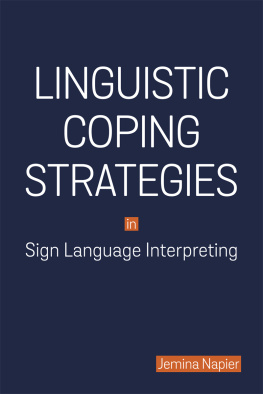
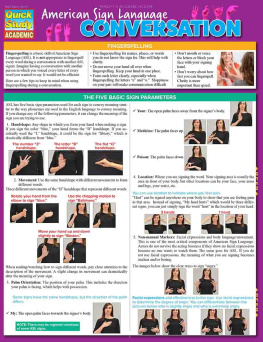

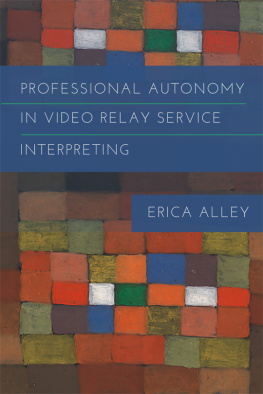

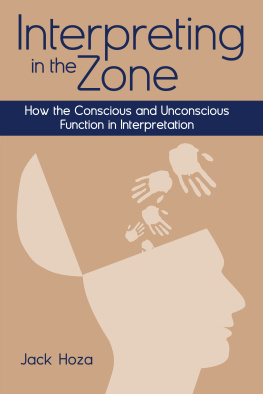

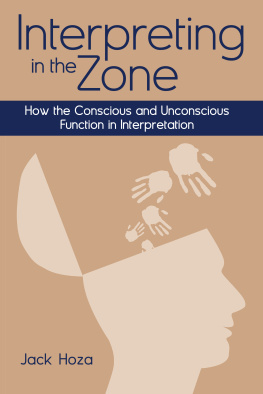



 This paper meets the requirements of ANSI/NISO Z39.48-1992 (Permanence of Paper).
This paper meets the requirements of ANSI/NISO Z39.48-1992 (Permanence of Paper).